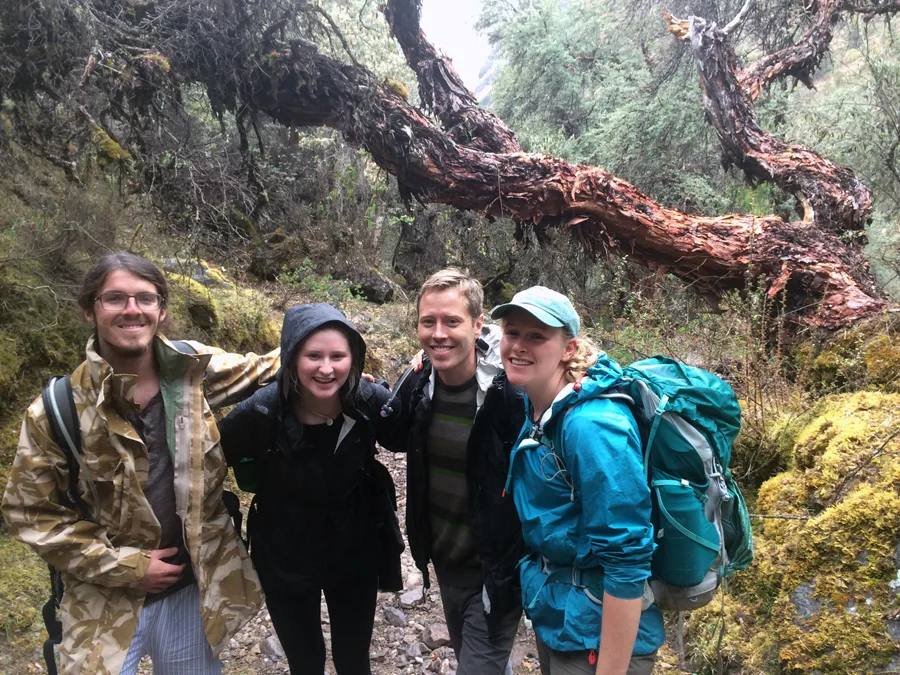
By: John Mwamhanga, M.S.
Mantanay Field Excursion
We often spend class outside conducting field exercises on topics as diverse as experimental reforestation plots, avian and primate surveys, habitat assessments, and camera traps at Villa Carmen Biological Station, our home in the lowland Amazon.
Walked into a group of Collared peccary, Pecari tajacu, while birding at Villa Carmen. This one stood still for a minute then finally ran off. Surveying blue-crowned trogon, black-capped tinamou, and yellow-rumped cacique as part of a Conservation Science and Practice field lab.
However, this particular day was spent hiking up an Andean mountain valley outside of Ollantaytambo – a starting point for the Inca Trail leading to Machu Picchu.
During the Inca Empire, Ollantaytambo was the royal estate of Emperor Pachacuti who conquered the region. These walls provided protection from the Spanish during their conquest of Peru.
This area is a prime example of conservation science in action: there has been a severe impact on the environment after centuries of deforestation; there are ecosystems and numerous species which have been impacted detrimentally; and there is a concerted effort to alleviate the impact on wildlife and flora by bridging local community support and participation with large-scale conservation programs.

Polylepis pepei (Rosaceae) forest.
This tree species is gnarly. Growing at elevations over 5000m (16,000 ft), this is one of the highest growing trees in the world. The thick bark helps protect against low temperatures. The extraction of this species from the Andes has driven this species to small pockets in mountain valleys. Many species are dependent on this tree and are near extinction: Royal cinclones (passerine bird), white-browned tit-spinetail, ash-breasted tit-tyrant, giant conebill, and Andean mountain cat. The protected area, Mantanay, is part of a conservation program to restore these highly decimated forests by developing alternative fuel and timber sources, reforesting Polylepis, and paying villagers to reforest.

SFS Fall 2015 students on our way up to the Mantanay Conservation Area.


Class at 4200m (13,799 ft)? Why not?! Glaciers, dogs, mountains, protected endangered species – what more could you want?

Students taking a break on the side of a mountain, playing Andean flute, overlooking the valley below, and enjoying the incredible bird diversity.
Everyone practicing their battle cry at the end of a challenging and rewarding hike.
Related Posts


Alumni Reflections: Stories of the Return to Kenya
